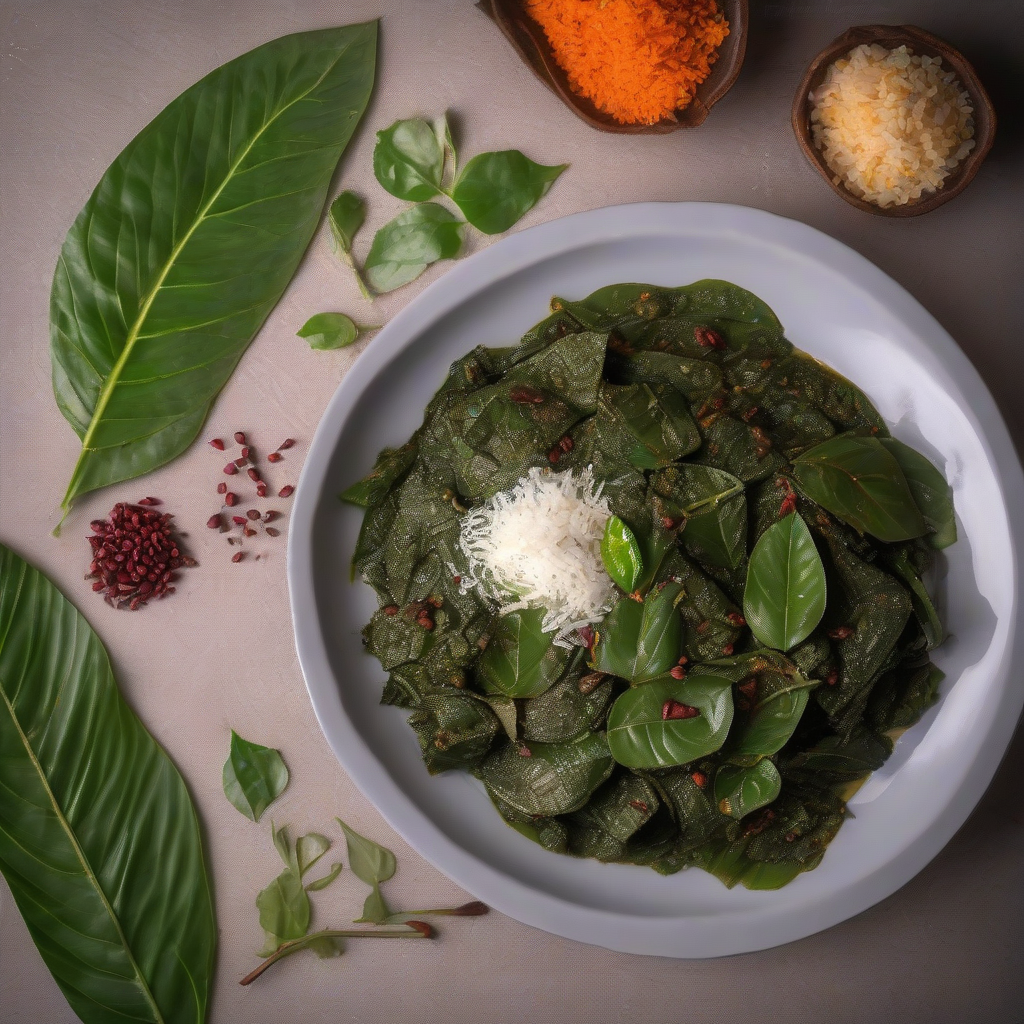Vadi Mania: Bajra Bhakri’s Best Friend – Amaranth Leaves Vadi Recipe!
Namaste Dosto! Kem cho? Kai Zhalaas? (Greetings friends! How are you? What’s up?) Chef Curry Do’pyaza here, back in your kitchens and ready to stir up some magic! Today, we are diving deep into a beloved Maharashtrian snack that’s healthy, delicious, and surprisingly easy to make: Amaranth Leaves Vadi!
This crispy, flavourful delight is more than just a snack; it’s a little piece of home, a taste of tradition, and a whole lot of yummy rolled into one.
When Do We Feast on Vadi?
Vadi is a versatile dish enjoyed throughout the year, but it truly shines during festivals like Ganeshotsav and Diwali. It’s a common sight in Maharashtrian homes, especially during the monsoon season when fresh amaranth leaves are abundant. It’s also a popular dish during fasting periods (Upvas) as it provides a good source of energy and nutrients. Some communities also make it as part of their auspicious rituals and celebrations.
A Little History Lesson
Vadi, in general, is a concept deeply rooted in Maharashtrian cuisine. It’s a clever way to use leafy greens and lentils, transforming them into a protein-packed, flavourful snack. Amaranth Leaves Vadi is a relatively newer variation, gaining popularity as people become more aware of the nutritional benefits of amaranth. It’s a testament to the resourcefulness and culinary creativity of Maharashtrian cooks!
Let’s Get Cooking!
- Preparation Time: 20 minutes
- Cooking Time: 30 minutes
Ingredients – The Magic Makers:
- 2 cups Rajgira Chi Bhaji (Amaranth Leaves), finely chopped
- 1 cup Besan (Gram Flour)
- 1/2 cup Bajra Atta (Pearl Millet Flour)
- 2 tablespoons Taandool Peeth (Rice Flour)
- 1 tablespoon Til (Sesame Seeds)
- 1 teaspoon Lal Mirch Powder (Red Chilli Powder) – adjust to your spice level!
- 1/2 teaspoon Haldi Powder (Turmeric Powder)
- 1/2 teaspoon Dhaniya Powder (Coriander Powder)
- 1/4 teaspoon Hing (Asafoetida)
- 1 inch Adrak (Ginger), grated
- 2-3 Lehsun (Garlic) cloves, minced
- 2 tablespoons Tel (Oil), plus more for shallow frying
- Salt to taste
- Water, as needed
Step-by-Step Instructions – The Culinary Journey:
- Leaf Prep: Wash the amaranth leaves thoroughly and chop them finely. This is important to avoid any dirt in your vadi.
- Mixing Bowl Fun: In a large mixing bowl, combine the chopped amaranth leaves, gram flour, pearl millet flour, rice flour, sesame seeds, red chilli powder, turmeric powder, coriander powder, asafoetida, grated ginger, minced garlic, 2 tablespoons of oil, and salt.
- Dough Time: Gradually add water, mixing well after each addition, until you form a firm, pliable dough. It should be similar to the consistency of roti dough. Don’t add too much water at once, or it will become sticky!
- Shape It Up: Divide the dough into equal portions. Roll each portion into a log shape, about 1 inch in diameter.
- Steam Power: Place the logs in a steamer and steam for 15-20 minutes, or until they are cooked through. You can check by inserting a knife; it should come out clean.
- Cool and Slice: Let the steamed logs cool completely. This is crucial for easy slicing. Once cooled, slice them into 1/4-inch thick rounds.
- Fry ‘Em Up: Heat oil in a shallow frying pan over medium heat. Gently place the vadi slices in the hot oil and fry until golden brown and crispy on both sides.
- Drain and Serve: Remove the fried vadi from the oil and drain on paper towels to remove excess oil.
Chef Curry’s Tips for Vadi Perfection:
- Fresh is Best: Use fresh, vibrant amaranth leaves for the best flavour and texture.
- Spice It Right: Adjust the amount of red chilli powder to your preferred spice level. You can also add green chillies for extra heat.
- Don’t Overcrowd: Fry the vadi in batches to avoid overcrowding the pan, which can lower the oil temperature and result in soggy vadi.
- Crispy Dreams: For extra crispy vadi, you can shallow fry them twice.
Vadi: Different Strokes for Different Folks
- Gas Stove: The traditional method! Steaming and frying on the gas stove is tried and tested.
- Induction Stove: Works just as well as a gas stove. Ensure the temperature is consistent.
- Pressure Cooker: You can steam the logs in a pressure cooker without the whistle. Add enough water to create steam.
- Oven: Bake the sliced vadi at 350°F (175°C) for 15-20 minutes, flipping halfway through, for a healthier, baked version.
- Air Fryer: Air frying is a fantastic option! Preheat your air fryer to 375°F (190°C) and air fry the vadi for 8-10 minutes, flipping halfway through, until golden brown and crispy.
- Microwave: Not recommended for this recipe.
- Slow Cooker/Crockpot: Not recommended for this recipe.
Nutritional Powerhouse
Amaranth leaves are packed with nutrients! They are a great source of iron, calcium, and vitamins A and C. This vadi is also a good source of protein and fiber, making it a healthy and satisfying snack.
Serving Suggestions – Vadi’s Best Friends:
- Bajra Bhakri: The classic pairing! The crispy vadi complements the rustic flavour of bajra bhakri perfectly.
- Chai Time Snack: Enjoy it with a hot cup of chai for a delightful afternoon treat.
- Raita Dip: Serve with a cooling raita dip for a refreshing contrast.
- As Is: Honestly, these are so delicious, you can enjoy them all on their own!
Your Turn!
So there you have it! A simple yet delicious recipe for Amaranth Leaves Vadi. I urge you to try this recipe at home. Gather your ingredients, put on your aprons, and let’s create some Vadi magic! Share this recipe with your friends and family. I know they will love it!
Happy Cooking, and until next time, keep the spices sizzling!
Yours truly,
Chef Curry Do’pyaza!
